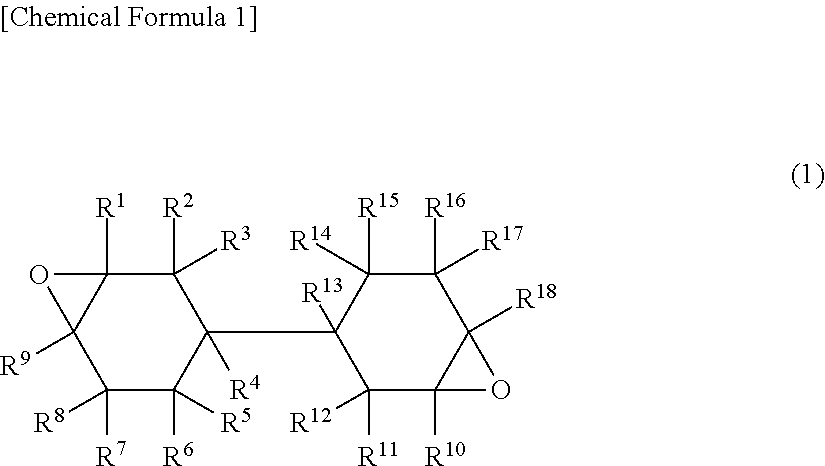Curable resin composition for nanoimprint
a technology of nano-imprinting and resin composition, which is applied in the direction of photomechanical equipment, manufacturing tools, instruments, etc., can solve the problems of line edge roughness to come to the surface, modern steppers are a considerable cost factor in microchip production, and cost explosion, so as to improve patterning accuracy, improve mold releasability, and improve mold releasability
- Summary
- Abstract
- Description
- Claims
- Application Information
AI Technical Summary
Benefits of technology
Problems solved by technology
Method used
Image
Examples
examples
[0135]The present invention will be illustrated in further detail with reference to several working examples below. It should be noted, however, that these examples are never construed to limit the scope of the present invention.
examples 1 to 11
, Comparative Examples 1 to 3
1) Preparation Method of Coated Films
[0136]A silicon substrate used herein was a 4-inch silicon wafer which had been preliminarily treated with hexamethyldisilazane.
[0137]A series of photocurable resin compositions for nanoimprint was prepared according to a known procedure in a spin coater using a compound (A) having a reactive functional group and a hydrophobic functional group in the same molecular skeleton, a curable monomer component (B), an initiator (C), a sensitizer (D), nanoscale particles (E), a binder resin (film-forming aid; F), and a solvent (G) as given in Table 1. Specific compounds as the respective components in Table 1 are shown below.
[0138]Compounds having a reactive functional group and a hydrophobic functional group in the same molecular skeleton: shown in Table 2.
[0139]Curable monomer components: shown in Table 3.
[0140]Initiators
[0141]C-1: 4-Methylphenyl[4-(1-methylethyl)phenyliodonium tetrakis(pentafluorophenyl)borate; PI2074 suppl...
PUM
| Property | Measurement | Unit |
|---|---|---|
| size | aaaaa | aaaaa |
| thickness | aaaaa | aaaaa |
| thickness | aaaaa | aaaaa |
Abstract
Description
Claims
Application Information
 Login to View More
Login to View More - R&D
- Intellectual Property
- Life Sciences
- Materials
- Tech Scout
- Unparalleled Data Quality
- Higher Quality Content
- 60% Fewer Hallucinations
Browse by: Latest US Patents, China's latest patents, Technical Efficacy Thesaurus, Application Domain, Technology Topic, Popular Technical Reports.
© 2025 PatSnap. All rights reserved.Legal|Privacy policy|Modern Slavery Act Transparency Statement|Sitemap|About US| Contact US: help@patsnap.com



